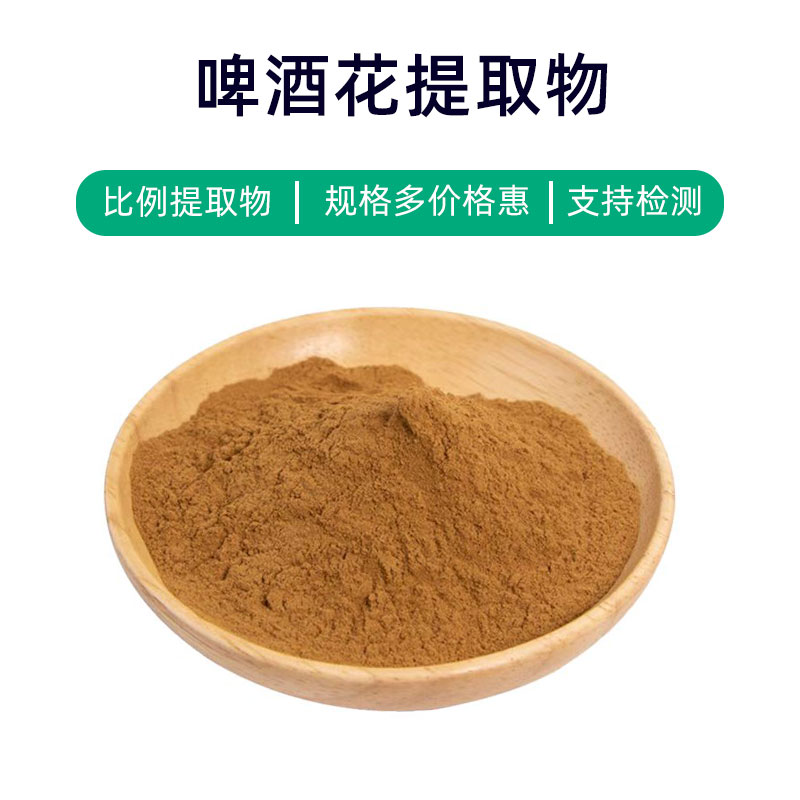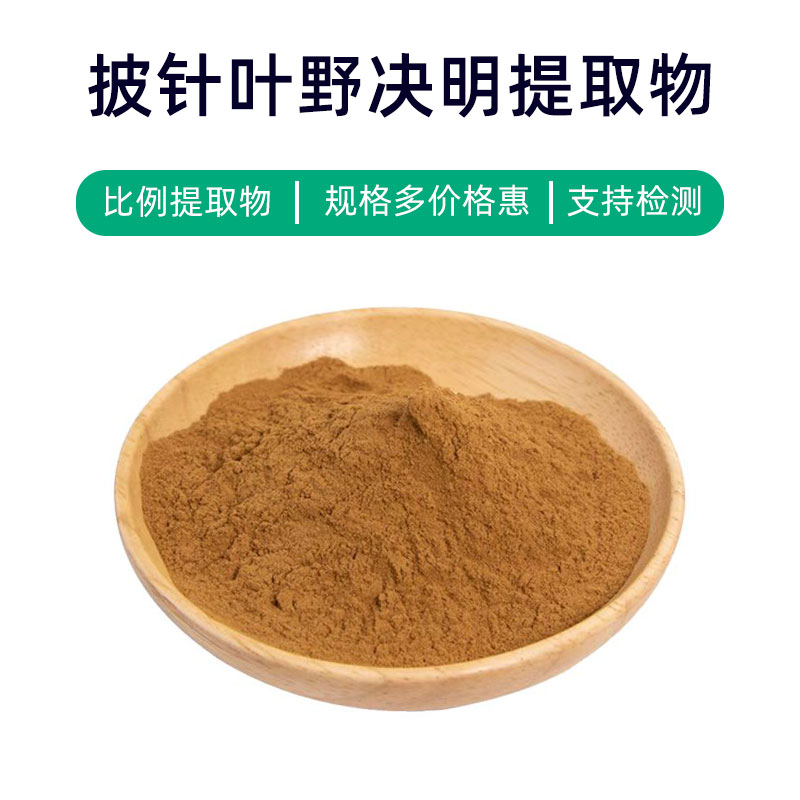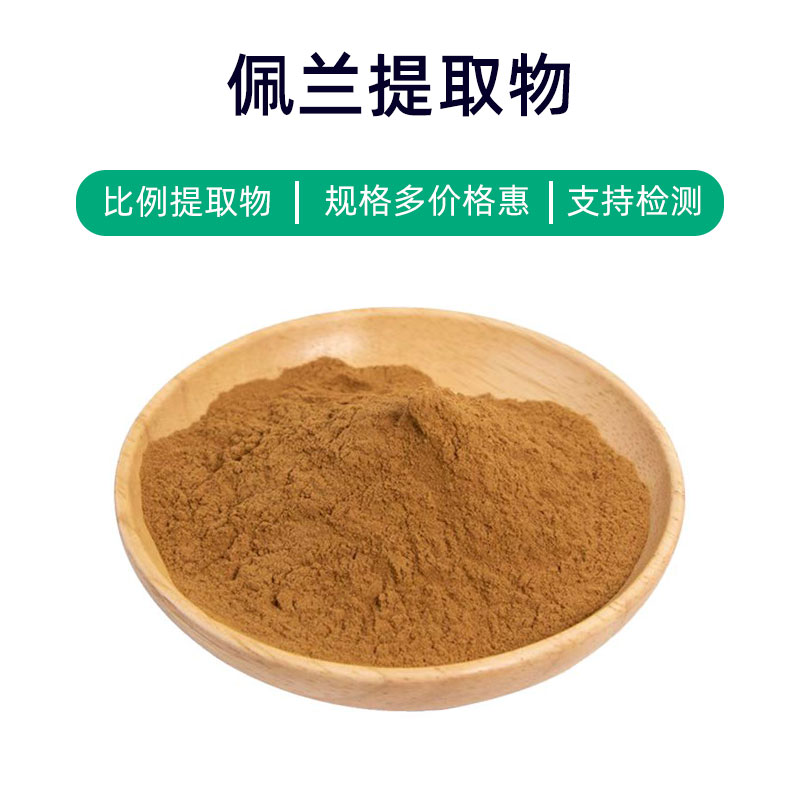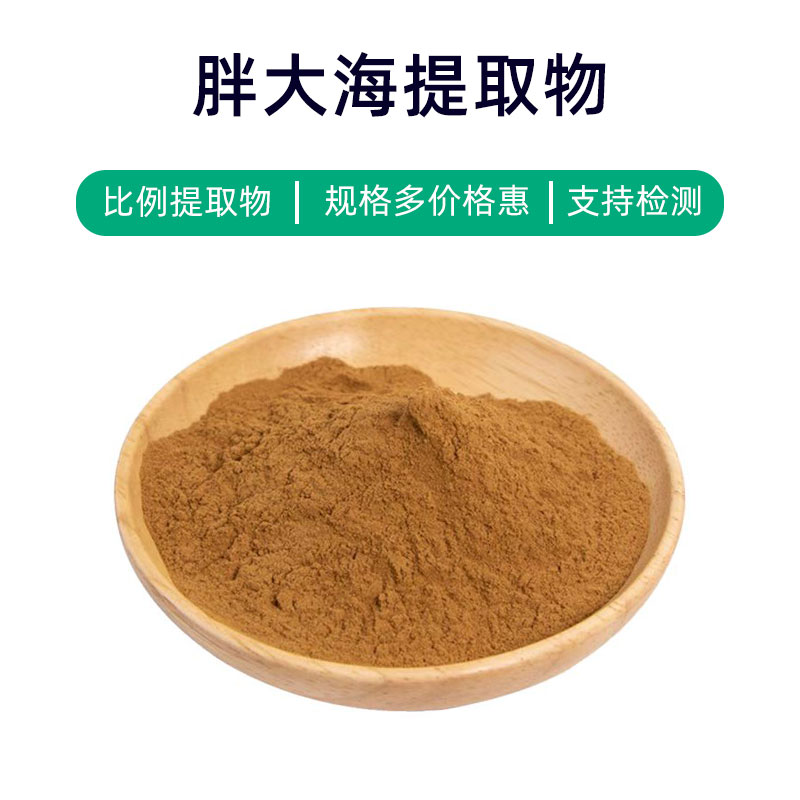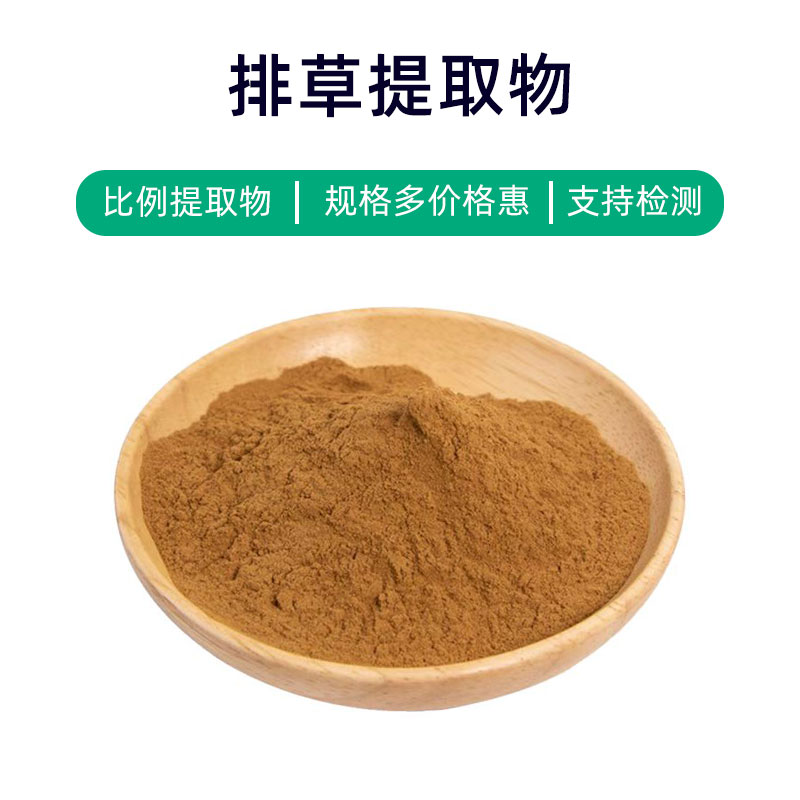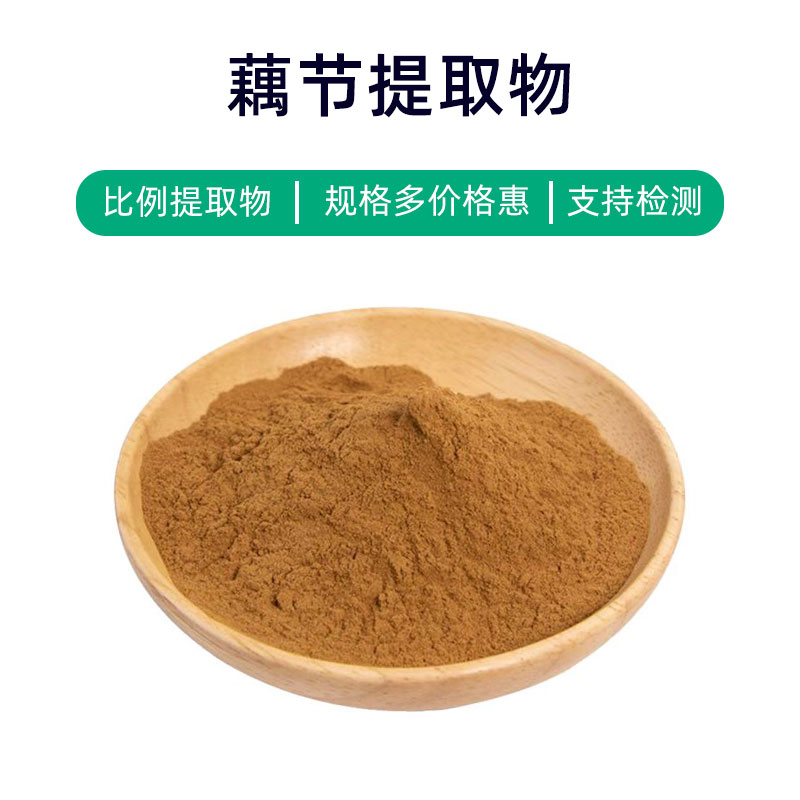Ginger Extract Product Introduction
Ginger extract is a natural plant extract derived from the roots of ginger (Zingiber officinale), primarily comprising active constituents like gingerol, zingerone, and curcumin. These components provide ginger extract with various benefits and broad applications.
Firstly, ginger extract possesses antioxidant and anti-inflammatory properties, helping to reduce free radical damage in the body, thereby aiding in disease prevention and protecting cells from harm. Its anti-inflammatory nature also makes it effective in alleviating inflammation and reducing joint pain.
Furthermore, ginger extract promotes digestion and alleviates digestive discomfort. It stimulates the secretion of gastric juices and increases gastrointestinal motility, aiding in the digestion of food and relieving stomach discomfort.
Ginger extract is also widely used in the beauty and cosmetics industry. Its antioxidant properties help slow down skin aging, reducing the appearance of wrinkles and fine lines. Additionally, it can cleanse pores and diminish inflammation, leaving the skin feeling refreshed and smooth.
In summary, ginger extract is a natural plant extract with multiple benefits including antioxidant, anti-inflammatory, digestive support, and skincare properties. It has promising applications in dietary supplements, pharmaceutical excipients, food additives, and cosmetics.
Ginger Extract Production Process
The production process of ginger extract typically involves the following steps:
- Preparation of Ginger Material: Select fresh, high-quality ginger roots, wash them thoroughly, and peel them to ensure cleanliness and hygiene.
- Chopping and Grinding: Chop the cleaned ginger roots into smaller pieces and then grind them into a powder form to increase the surface area for effective extraction of active components.
- Extraction Process: Use appropriate solvents (such as ethanol or water) to soak the ginger powder to extract the active components. Typically, repeated or continuous soaking methods are used to ensure thorough extraction.
- Concentration and Filtration: Concentrate the extract to remove most of the solvent, obtaining a concentrated liquid. Then, filter or centrifuge to remove residues and impurities, resulting in pure ginger extract.
- Drying and Pulverizing: Dry the extracted liquid to eliminate residual solvents, turning it into a powder form. Subsequently, pulverize and sieve the powder to achieve the desired particle size.
- Quality Control and Testing: Conduct quality testing of the extract, including evaluations of active ingredient content, microbial indicators, heavy metals, and pesticide residues, ensuring the product meets relevant quality standards and safety requirements.
- Packaging and Storage: Package the extract in hygiene-compliant containers, sealing them to prevent moisture and contamination. Finally, store under specified conditions, typically in a cool, dry environment, avoiding direct sunlight and high temperatures.
Ginger Extract Efficacy and Side Effects
Ginger extract has various benefits and effects, primarily comprising the following aspects:
- Digestive Aid: Ginger extract contains active components like gingerol, which stimulate gastrointestinal motility and the secretion of digestive juices, assisting in food digestion and alleviating symptoms like indigestion and bloating.
- Anti-inflammatory Pain Relief: Ginger extract exhibits notable anti-inflammatory properties, helping to relieve pain and inflammation, commonly used for conditions such as arthritis, muscle pain, and headaches.
- Antioxidant Effect: Ginger extract is rich in antioxidant components like gingerol and curcumin, which help neutralize free radicals, reducing oxidative damage, aiding in slowing cellular aging, and improving the body's resistance.
- Antimicrobial Activity: Ginger extract possesses certain antibacterial and antiviral properties, useful in preventing and assisting in the treatment of respiratory infections such as colds and pharyngitis.
- Improved Blood Circulation: Ginger extract helps dilate blood vessels and promote circulation, alleviating issues like cold hands and feet in winter and poor blood flow.
- Anti-tumor Activity: Some studies indicate that curcumin in ginger extract has anti-tumor properties and can inhibit the growth and spread of tumor cells, potentially serving as an auxiliary treatment in cancer therapy.
- Regulation of Blood Sugar and Lipids: The active components in ginger extract possess blood sugar-lowering and lipid-reducing effects, assisting in the prevention and improvement of metabolic diseases like diabetes and hyperlipidemia.
- Enhanced Immune Function: Ginger extract can modulate the immune system, boosting the body's immune function to prevent infections and diseases.
It’s important to note that while ginger extract has numerous benefits, there can be side effects and precautions. Long-term or high-dose use may lead to digestive discomfort, gastrointestinal irritation, or allergic reactions. Pregnant women, breastfeeding mothers, and individuals with specific health conditions are advised to consult a doctor before use to avoid unnecessary risks.
Ginger Extract Application Scenarios and Dosage
Ginger extract has a wide range of applications in medicine, food, and cosmetics. Here are the main application scenarios and dosage guidelines:
- Applications in Medicine:
- Indigestion and GI Discomfort: Ginger extract is commonly used in the production of digestive medications, such as gastrointestinal pain relievers and medications for alleviating indigestion, bloating, and nausea.
- Anti-inflammatory Pain Relief: Ginger extract is used to make anti-inflammatory and pain relief medications for conditions like rheumatoid arthritis and muscle pain.
- Antimicrobial Treatments: Ginger extract's antibacterial and antiviral properties make it suitable for creating medications for infections, such as cold remedies and throat lozenges.
- Applications in Food:
- Flavoring Ingredient: Ginger extract is a common spice used in diverse cooking methods such as stir-frying, soup-making, and pickling; it is typically used in moderation.
- Functional Foods: Ginger extract is often added to functional foods such as ginger-flavored beverages and ginger cookies to enhance flavor and nutritional value.
- Applications in Cosmetics:
- Skincare: With its antioxidant and anti-inflammatory properties, ginger extract can be used in skincare products such as soothing masks and revitalizing creams, typically applied in moderation.
- Hair Care: Ginger extract is often included in shampoos and conditioners, promoting scalp cooling and hair growth, usually used in moderation.
When using ginger extract, the following dosage guidelines should be considered:
- Medical Dosage: Use according to a doctor's advice, generally 1-2 grams per dose, 2-3 times daily, or as specified in medication guidelines.
- Culinary Usage: When used for flavoring, add to taste, generally not exceeding moderate amounts.
- Cosmetic Usage: Follow product instructions or manufacturer recommendations, applying an appropriate amount evenly to skin or hair.
Overall, ginger extract has extensive applications in various fields, but it should be used reasonably according to specific situations and product instructions to avoid unnecessary risks.
Ginger Source Plant Introduction, Distribution, and Growth Environment
Ginger (scientific name: Zingiber officinale Roscoe) is a perennial herbaceous plant belonging to the Zingiberaceae family and is also known as fresh ginger or ginger root. Ginger extract is derived from its rhizomes, offering significant medicinal and culinary value. Below is a detailed overview of the source plant of ginger extract, including its introduction, distribution, and growth environment:
- Plant Introduction:
- Ginger is a stem and foliage-type plant with thick rhizomes, possessing a rich aroma and spicy flavor. It is an important spice and medicinal herb.
- The plant grows approximately 50-100 centimeters tall, with erect stems, alternate leaves that are long and oval-shaped, and flowering spikes occurring in the leaf axils, featuring small and inconspicuous flowers that bloom in summer.
- Distribution:
- Originating in Northeast India, ginger is now widely cultivated in Southeast Asia, the Indian subcontinent, southern China, South America, Africa, and Australia.
- China is one of the largest ginger-producing regions globally, primarily found in Guangdong, Guangxi, Fujian, Yunnan, Zhejiang, and Jiangxi provinces.
- Growth Environment:
- Ginger thrives in warm, humid climates, with an ideal growing temperature of 20-30 degrees Celsius. Mild winters and rainy summers are the best conditions for its growth.
- Ginger prefers sunlight and requires ample light exposure but can also adapt to semi-shaded environments, making it suitable for cultivation in more humid areas.
- Its roots require loose, well-draining soil, with sandy loams or loamy sands being the most suitable, and a pH level between 6 and 7 is optimal.
The rhizomes of ginger contain rich essential oils and active components like gingerol, making them significant in medicinal and food processing contexts. Ginger extract is obtained by extracting effective components from the rhizome, providing notable medicinal and flavoring benefits, and is widely used in pharmaceuticals, food, and cosmetics.
Ginger Extract Processing and Storage
The processing of ginger extract typically includes the following steps:
- Harvesting and Cleaning: First, mature ginger rhizomes are harvested, cleaned of soil and impurities, and then thoroughly washed with clean water to ensure the purity of the extract.
- Chopping and Grinding: The cleaned ginger rhizomes are chopped into small pieces or slices before being ground into a fine powder to increase extraction efficiency.
- Solvent Extraction: The powdered ginger rhizome is mixed with an appropriate solvent (such as ethanol or water), undergoing processes like soaking and filtering to dissolve the active components into the solvent.
- Concentration and Drying: The resultant liquid extraction is concentrated to remove excess solvent and then dried to form a dried extract.
- Refining and Packaging: The dried ginger extract undergoes refinement to eliminate impurities and unwanted materials, followed by packaging as needed to ensure quality and stability.
For storage, ginger extract should be kept in a cool, dry, and ventilated place, avoiding direct sunlight and damp conditions to prevent moisture absorption, spoilage, or microbial contamination. It is recommended to use sealed containers or packaging to minimize exposure to air and extend its shelf life.
Monica Sun is a seasoned expert in the plant extraction industry with over a decade of experience in research and production. She specializes in the extraction and purification of plant active ingredients, focusing on driving innovation in natural product applications. Monica has participated in the development of multiple functional plant extracts, delivering high-value natural raw material solutions for the health food, pharmaceutical, and dietary supplement sectors.









